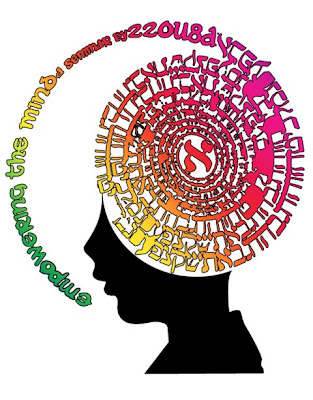
Read the whole article.Neural correlates of self-reflection
SummarySterling C. Johnson1,2 ,Leslie C. Baxter1 ,Lana S. Wilder1 ,James G. Pipe2 ,Joseph E. Heiserman2 andGeorge P. Prigatano1 Departments of 1 Clinical Neuropsychology and 2 Magnetic Resonance Imaging, Barrow Neurological Institute, St Joseph’s Hospital and Medical Center, Phoenix, AZ, USA
Brain, Vol. 125, No. 8, 1808-1814, August 2002
© 2002 Guarantors of BrainCorrespondence to: Sterling C. Johnson, PhD, Clinical Neuropsychology, Barrow Neurological Institute, St Joseph’s Hospital and Medical Center, 222 W. Thomas Road 315, Phoenix, AZ 85013, USA E-mail: s2johns@chw.edu
Received May 14, 2001. Revised January 21, 2002. Accepted February 28, 2002.
Top
Summary
Introduction
Methods
Results
Discussion
Conclusion
References
The capacity to reflect on one’s sense of self is an important component of self-awareness. In this paper, we investigate some of the neurocognitive processes underlying reflection on the self using functional MRI. Eleven healthy volunteers were scanned with echoplanar imaging using the blood oxygen level-dependent contrast method. The task consisted of aurally delivered statements requiring a yes–no decision. In the experimental condition, participants responded to a variety of statements requiring knowledge of and reflection on their own abilities, traits and attitudes (e.g. ‘I forget important things’, ‘I’m a good friend’, ‘I have a quick temper’). In the control condition, participants responded to statements requiring a basic level of semantic knowledge (e.g. ‘Ten seconds is more than a minute’, ‘You need water to live’). The latter condition was intended to control for auditory comprehension, attentional demands, decision-making, the motoric response, and any common retrieval processes. Individual analyses revealed consistent anterior medial prefrontal and posterior cingulate activation for all participants. The overall activity for the group, using a random-effects model, occurred in anterior medial prefrontal cortex (t = 13.0, corrected P = 0.05; x, y, z, 0, 54, 8, respectively) and the posterior cingulate (t = 14.7, P = 0.02; x, y, z, –2, –62, 32, respectively; 967 voxel extent). These data are consistent with lesion studies of impaired awareness, and suggest that the medial prefrontal and posterior cingulate cortex are part of a neural system subserving self-reflective thought.Keywords: fMRI; medial prefrontal cortex; posterior cingulate; self-awareness; self-reflection
Abbreviation: AMPFC = anterior medial prefrontal cortex be involved in this task.
Introduction
The capacity to consciously reflect on one’s sense of self is an important aspect of self-awareness. A sense of self is a collection of schemata regarding one’s abilities, traits and attitudes that guides our behaviours, choices and social interactions. The accuracy of one’s sense of self will impact ability to function effectively in the world. A patient for whom self-awareness is compromised may have a sense of self regarding abilities and traits that is not congruent with what others observe (Stuss, 1991
Top
Summary
Introduction
Methods
Results
Discussion
Conclusion
References
; Prigatano, 1999
). For example, a brain-injured patient may feel he/she can competently return to the same level of employment when observations by others indicate otherwise. When asked, brain-injured patients often underestimate their own emotional dyscontrol, cognitive difficulties and interpersonal deficits relative to a family member’s rating of their abilities (Prigatano, 1996
). Inaccurate self-knowledge can significantly impede efforts to rehabilitate brain-injured patients, since they may not appreciate the need for such treatment (Sherer et al., 1998
a, b).
Hughlings Jackson postulated that a sense of self is dependent on the evolutionary development of the prefrontal cortex (Meares, 1999
). Lesion studies have generally supported this hypothesis. Damage to the anterior prefrontal regions has been associated with impaired self-awareness for the appropriateness of social interactions, judgement and planning difficulties (Prigatano and Schacter, 1991
; Stuss, 1991
), as well as impaired awareness of the mental states of others (‘theory of mind’; Stone et al., 1998
; Stuss et al., 2001
). Impaired self-awareness appears to occur more frequently following medial prefrontal damage (Damasio et al., 1990
), but may not be limited to this region.
Although much has been learned from lesion studies, to date there is little functional imaging data on this topic. A recent study found that patients with frontal dementia and a change in personality functioning also exhibited greater right prefrontal hypoperfusion (Miller et al., 2001
) using SPECT (single-photon emission computed tomography) scanning. Studies using cognitive activation paradigms report activations to self-monitoring of current emotional or somatic states (McGuire et al., 1996
; Lane et al., 1997
; Blakemore et al., 2000
; Gusnard et al., 2001
). Activations in these studies were within the anterior cingulate and paracingulate region, Brodmann area (BA) 32 (Frith and Frith, 1999
). To date, no studies have addressed the process of conscious reflection on one’s own traits, abilities and attitudes that comprise a sense of self.
For the paradigm reported in this paper, we used stimuli that were similar to what one might find on a self-report personality or mood survey. We asked participants to answer questions regarding stable traits, attitudes and abilities. The control condition involved retrieval of general factual knowledge (semantic knowledge retrieval). In light of previous lesion and imaging studies, we hypothesized that the medial prefrontal cortex would be involved in this task.
No comments:
Post a Comment